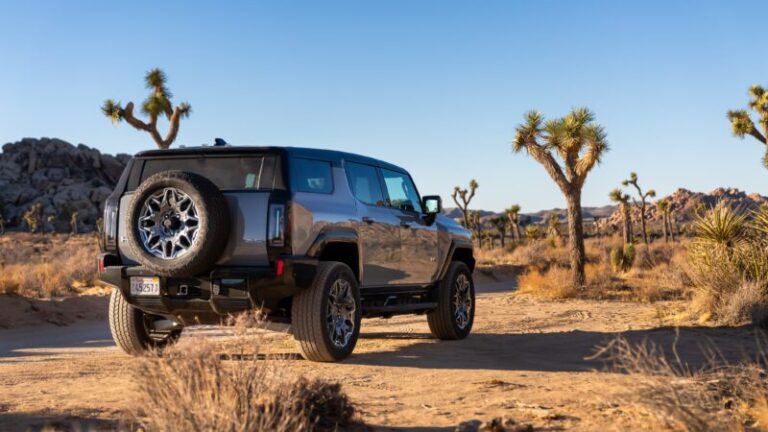I can’t look away. Every swipe brings forth new footage of homes on fire and decimated communities across Los Angeles. Doom scrolling eats my days as I scan for evacuation notices and new information. Parting the blinds to look outside makes things worse. I live just south of Altadena, the city most affected by the Eaton fire, and my window provides an unobstructed view of the glowing flames as they consume the San Gabriel Mountains.
It’s Thursday, January 9th, as this natural disaster enters its third day, powered by unprecedentedly potent Santa Ana winds. We’ve just returned to our house after evacuating on Tuesday night. As an Asthmatic, I made the call to flee long before any notice from the fire department. Two days on, the smoky air is starting to clear as a thin layer of ash covers the inside of our home. A dense coating blankets the exterior. The sun is no longer obstructed by smoke clouds, with streaks of light and blue sky piercing through. Fallen trees and branches partially block the road home, but ultimately, the structure is intact.
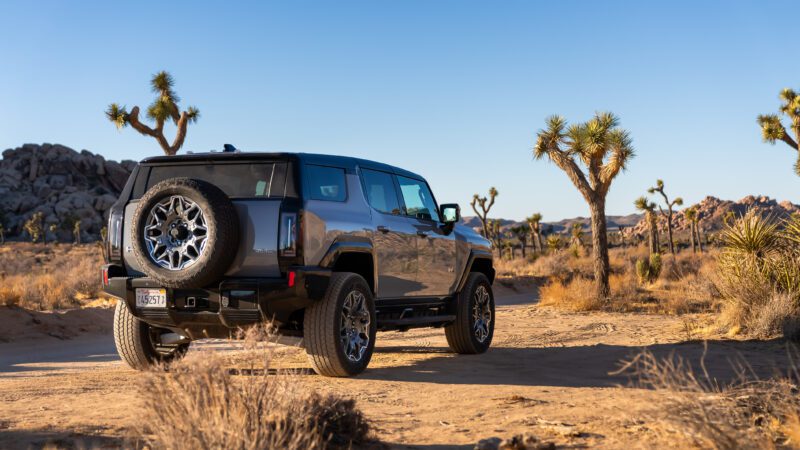
We got lucky. Firefighters were able to stop the advancing flames about a mile north of us as they entered northern Pasadena. Many others, not just in Altadena but across Los Angeles, weren’t so fortunate. Now that we’re safe, my wife and I scour the web for information about how we can support local evacuation and animal shelters. Yet, as we’re deep in research mode, a text tells me that the local press fleet is dropping off a 2025 GMC Hummer EV SUV in a few minutes.
I knew it was coming. Even as GMC graciously offered to reschedule the loan, given the circumstances, I declined. I’d initially planned a multi-day road trip into the desert to test the Hummer over highway stretches and off-road, but that was off the table. Still, having a massive vehicle around to haul or tow supplies makes sense at a time like this. If anything, its gigantic 170-kilowatt-hour battery pack can power my house in case of an outage.
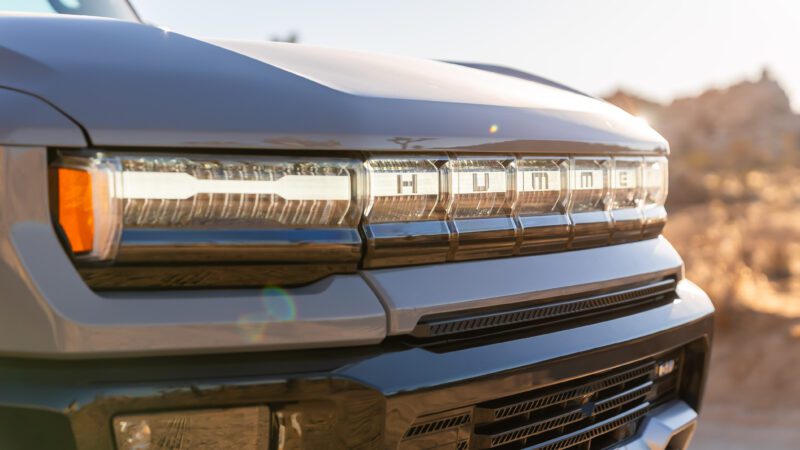
We jump in and head to the shelters all over town. Lines of cars stretch for miles as hundreds of people travel from Pasadena and beyond, their trunks full of supplies ready to help. We visit a handful and encounter the same crowding, so we turn to social media. Countless videos of shelter spokespeople appear, urging the public to hold off on bringing more items. Their staff and volunteers are overwhelmed, unable to effectively process and distribute them all.
I’m amazed at how quickly our city united to support one another. Still, I’m gutted that our first effort to contribute failed. As we head back home, my wife decides that if more supplies won’t help, donating directly will. She spends the rest of Thursday and the following Friday contributing to various campaigns, supporting local businesses destroyed by the fires, the 2025 Wildfire Relief Fund that routes resources to displaced households, and donating directly to families via GoFundMe.
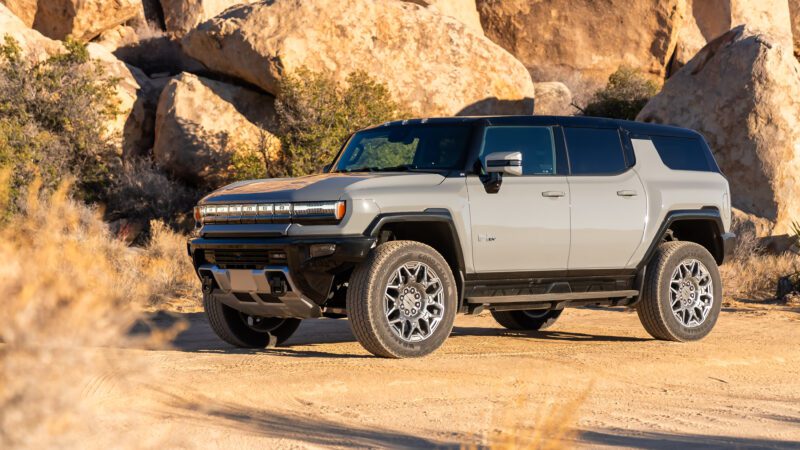
Saturday morning comes, and the sky appears deceptively clear. However, a notification on my phone warns that the air quality is hazardous. It’s the first moment of solace since the fires began. The weight of having to ditch my home in the middle of the night, the constant fear of imminent loss, and the general destruction of my surrounding community fall on me, crushing my desire to do anything other than lay on the couch with the shades drawn. However, I’ve still got the Hummer parked out back.
I’ve borrowed it for a story and feel compelled to deliver. Truthfully, the prospect of stepping away from this ongoing natural disaster, even for half a day, is too tempting to pass up. So I sketch a quick route on a map, taking me from Pasadena to Joshua Tree National Park and back. I pull up the air quality and fire risk indicators for the desert on my phone, both are in the green. I decide to go.
As I walk up to the electric behemoth parked just outside my garage, I notice it’s collected a layer of ash, fallen leaves, and broken branches overnight, making its Meteorite Metallic paint appear almost a shade darker. As far as off-roading SUVs go, it’s hard to believe that something this massive, is powered by electricity. As you press the start button, you half expect the burble of a small-block V8 or the chatter of a Duramax, but neither comes.
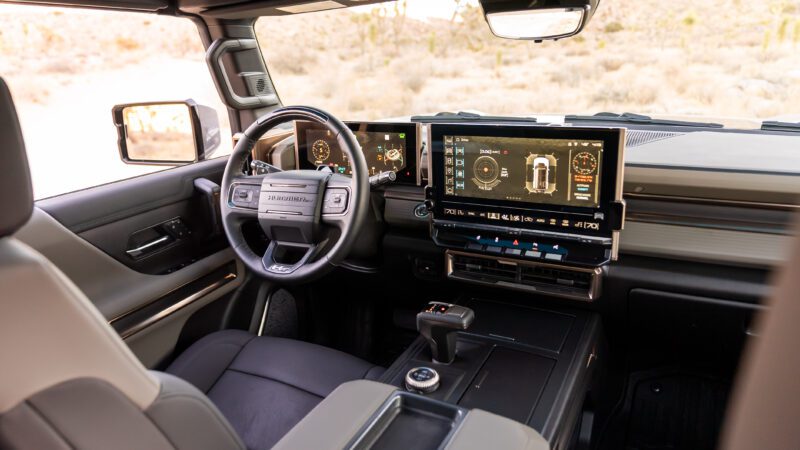
Instead, graphics and sounds attempt to infuse theatrics, an anti-climatic start for such a flashy machine. Not even its knobby set of 35-inch Goodyear Wrangler Territory AT tires make much of a sound. Only the noise of cracking branches crushed under the Hummer’s immense weight enters the cabin.
Even as you sit behind the wheel, peering through the almost upright and short windshield, you’re never allowed to forget that the Hummer isn’t a run-of-the-mill SUV. The distance between driver and passenger isn’t as vast as in an H1, but reaching them still requires a stretch. As you grip the massive wheel, the scale of this enormous interior makes you feel 10 years old again, like you’ve snuck off into your parent’s car for a make-believe drive, fabricated sound effects and all.
I look ahead, and its 12.3-in digital instrument cluster reads about a 70 percent state of charge, and 221 miles of range. We’ll have to stop at some point to charge, but that’s a problem for future me.
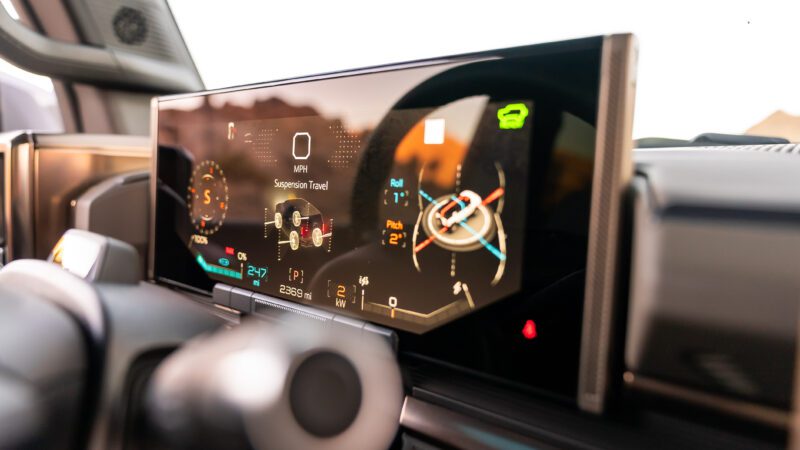
A sharp right-hander lines me up with a highway on-ramp as I approach Interstate 210 heading east. As one does when presented with a runway and clearance for take-off, I gun it. I’ve experienced world-beating acceleration from the Lucid Air Sapphire, the Pininfarina Battista, and the Lamborghini Revuelto. Still, none is quite as dramatic as the GMC Hummer EV SUV.
It squats violently. This electric colossus picks up speed in a way something of its size shouldn’t be able to, even without the full-power Watts To Freedom mode engaged. Sure, there isn’t an exhaust note to enjoy, but I’d trade that any day for a small building that’s still quicker than most sports cars. The secret to this formidable performance is a tri-motor setup, one up front and two in the rear, which can deliver up to 830 horsepower and a 3.5-second 0-60 mph time.
To put that into perspective, the GMC Hummer EV’s estimated weight is just under that of three McLaren 750s, yet it’s only about a second slower to 60 mph despite a surplus of only 90 hp. It doesn’t lose steam at highway speeds, either. Stab the accelerator and you’ll still get a confident burst forward, the nose lifting toward the sun. Regardless, its performance is beyond impressive.
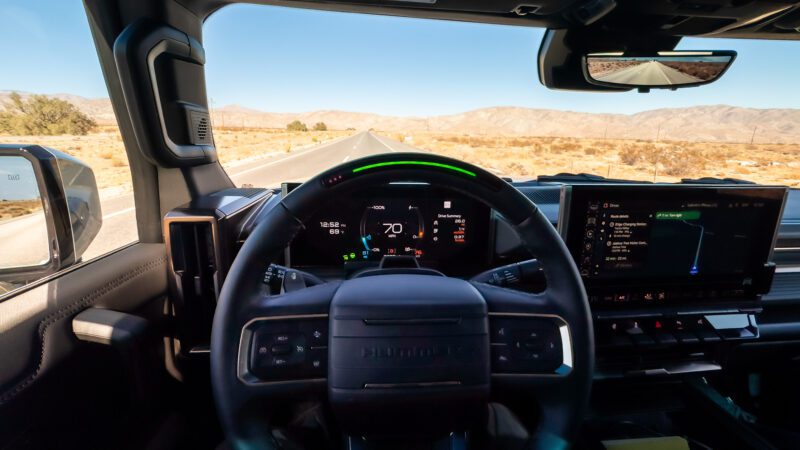
To conserve some semblance of efficiency, I dial back the speed and engage Super Cruise. This is GM’s hands-free driver assistance system for those unfamiliar, available on various models from GMC, Cadillac, and Chevrolet. It works on over 750,000 miles of mapped roads, disengaging when there isn’t sufficient data. It can even execute automatic lane changes. It’s the type of system that is so easy to use and effective that living without it again is something I don’t look forward to.
Effortlessly passing slow traffic on the left lane, it’s clear that the GMC Hummer EV SUV might be marketed as an off-roader, but it’s plenty luxurious. The cabin is nicely appointed, and beyond just being spacious, it’s relatively quiet below 70 mph. There’s endless room to store the inevitable snacks and bottles obtained on any road trip, and dark bronze accents create good contrast against the black plastics.
A bright 13.4-inch infotainment screen complements the digital cluster nicely. At the same time, the controls you most often use remain mapped to physical buttons and switches. Its heated and ventilated front seats are comfortable for longer drives and offer decent side bolstering. With abundant interior space, spending long periods in its cabin never feels claustrophobic, even less so if you option the $1,495 Infinity Roof incorporating removable glass panels.
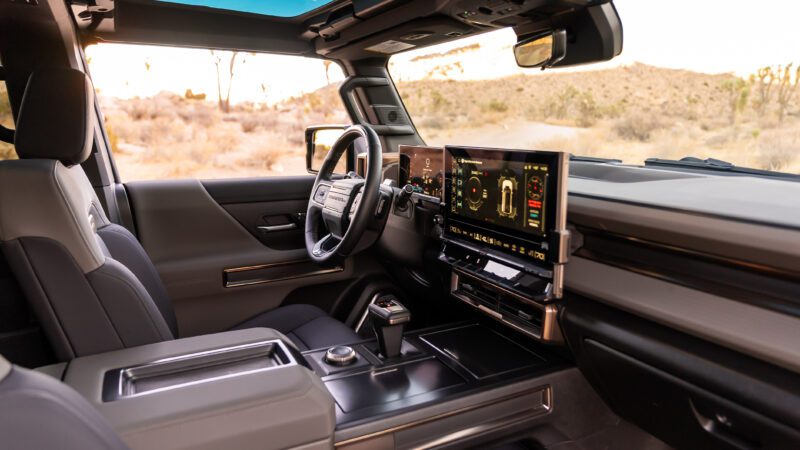
While I threw the route for this drive together in Apple Maps, I quickly migrated it to this truck’s native infotainment system. It relies on Google Maps for navigation data, which means it works well. However, the major benefit is the myGMC mobile app
which allows you to add charging stops on the fly, instantly forwarding the data from your phone to the map in the central screen. It makes tracking how many chargers are ahead and behind you effortless, significantly cutting down any range anxiety.
Anxiety isn’t something I feel at all, road-tripping an EV through Southern California in early 2025, especially the GMC Hummer EV SUV. Its battery pack is massive, providing an estimated 312 miles of range on a full charge. However, opt for the Extreme Off-Road Package, and that figure will drop. While this is an 800-volt system, allowing it to charge at up to 300 kilowatts, recharging this massive pack takes time and, as I soon found out, considerable cost.
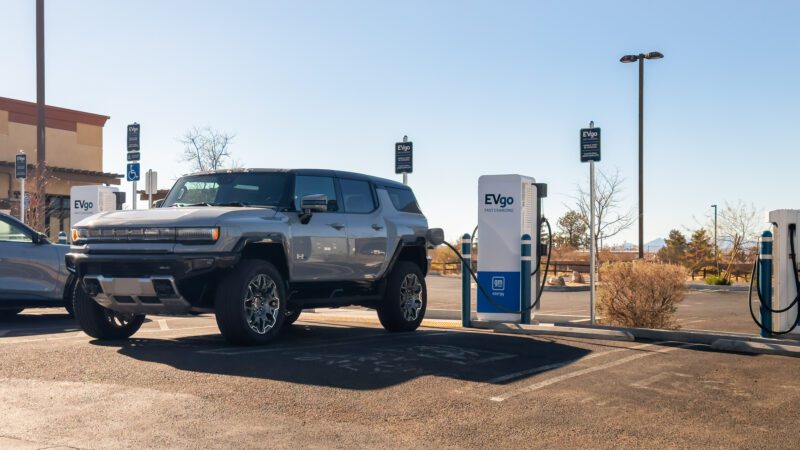
GM vehicles recently gained access to the Tesla Supercharger network, allowing you to charge at over 17,800 stations nationwide, bringing the total accessible network to over 231,800 Level 2 and DC fast-charging stations in North America. However, you must consult the myGMC app because some stations remain Tesla-only.
The road past Palm Springs and up to Joshua Tree feels like you’ve been teleported to Mars. Epic rock formations litter the landscape as hundreds of windmills punctuate through the desert floor. The sky is spotless, and the moon is visible through mountain peaks.
As the truck predicted, I make it to a 350 kW EVgo charger just outside Joshua Tree with 19 percent left. It’s deserted, and within minutes, the GMC Hummer EV SUV is pulling an indicated 304 kW, exceeding its stated limit. The jump from 19 to 90 percent takes 48 minutes and costs $97.55. While that’s still less than it would cost to fuel a comparatively sized internal combustion truck, the savings aren’t substantial.
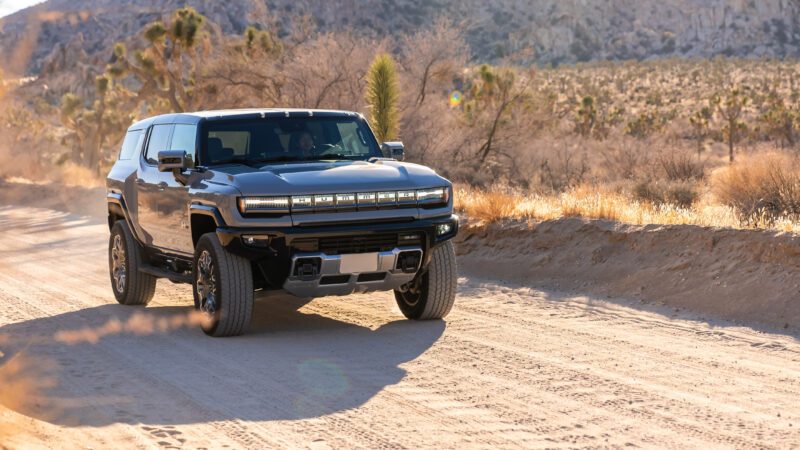
As its tires cross the first patch of desert sand, I realize I’m not thinking about fire or destruction for the first time in days. I’m driving this huge and powerful thing and just having fun. It asks: what if your off-roading SUV was as spacious as a van, as comfortable as a luxury car, but as quick as a sports car?
The second and most crucial part of that question is this: what if it was that quick just about anywhere? The desert provides ample room to find out. The Hummer rips through washboard roads, and if you dial back traction control and engage Off-Road mode, it’ll drift, too. I ask my wife to drive past me as I snap some photos, and I can see her smiling through the window. Someone not even vaguely interested in cars, much less massive trucks, is having a blast in the desert. Almost as much as I am watching this giant SUV kicking up an enormous dust cloud as it sprints past.
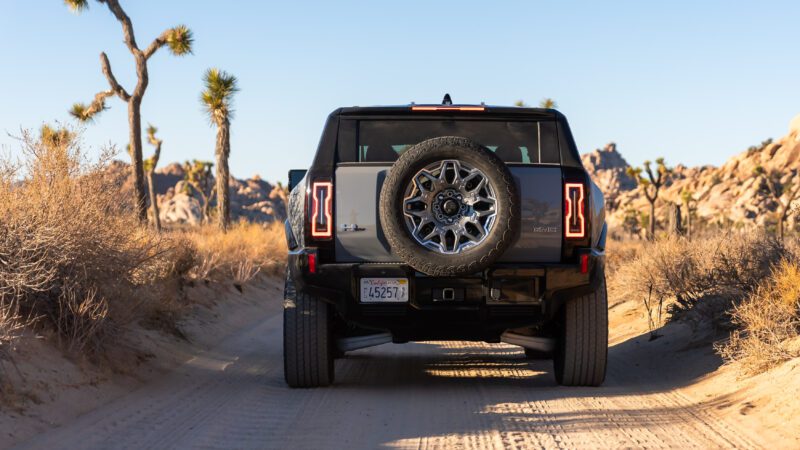
Although our schedule initially has us heading home after two hours, we stay for an extra two, driving through the desert, stopping for photos, and generally enjoying a lovely day at the end of a cluster of bad ones. To my surprise, she wants to keep driving, a request never made when I’ve got a McLaren, Lamborghini, or Ferrari on loan.
Yet, that’s what makes the GMC Hummer EV SUV such a compelling truck. It isn’t just fast, spacious, and comfortable. It’s easy to drive. Despite its footprint, thanks to over a dozen cameras, maneuvering it is no challenge, making it approachable to anyone. The SUV takes things further because its wheelbase is nearly nine inches shorter than the truck’s. Combined with an aggressive rear-axle steering system, it has the turning radius of a small sedan.
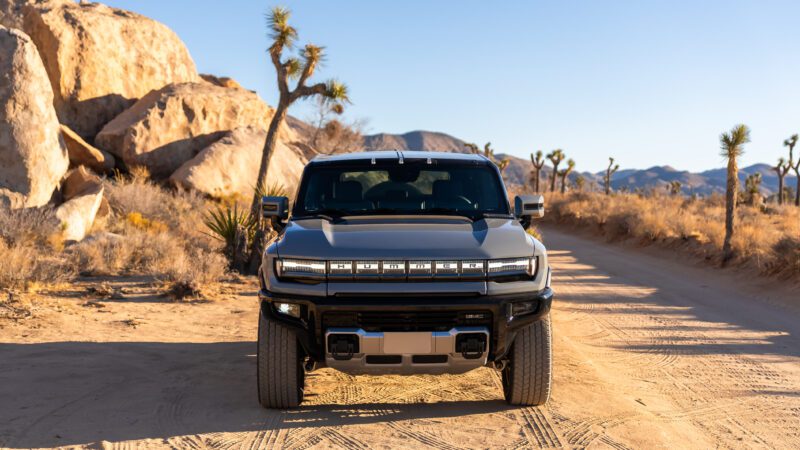
Of course, the elephant in the room: It isn’t exactly the most elegant thing to be seen in. You won’t be cross-shopping it with a Range Rover or a Mercedes-Benz G-Class, but that’s not what it’s going for. With an as-tested price of $109,415, it certainly costs less than both. Like the BMW XM, the Hummer is a statement piece; it’s not for flying under the radar. It’s meant to be a little absurd, bordering on obnoxious, but that’s part of the experience.
As I head back towards Los Angeles, to the inevitable heaviness that awaits me, I’m glad I decided to step away for the day. I’m happier still I’m driving this enormous, 830-hp electric SUV. In an industry often consumed by chasing segment targets and outgoing competitors, it is easy to forget that cars still need to be fun. Thankfully, the Hummer doesn’t


